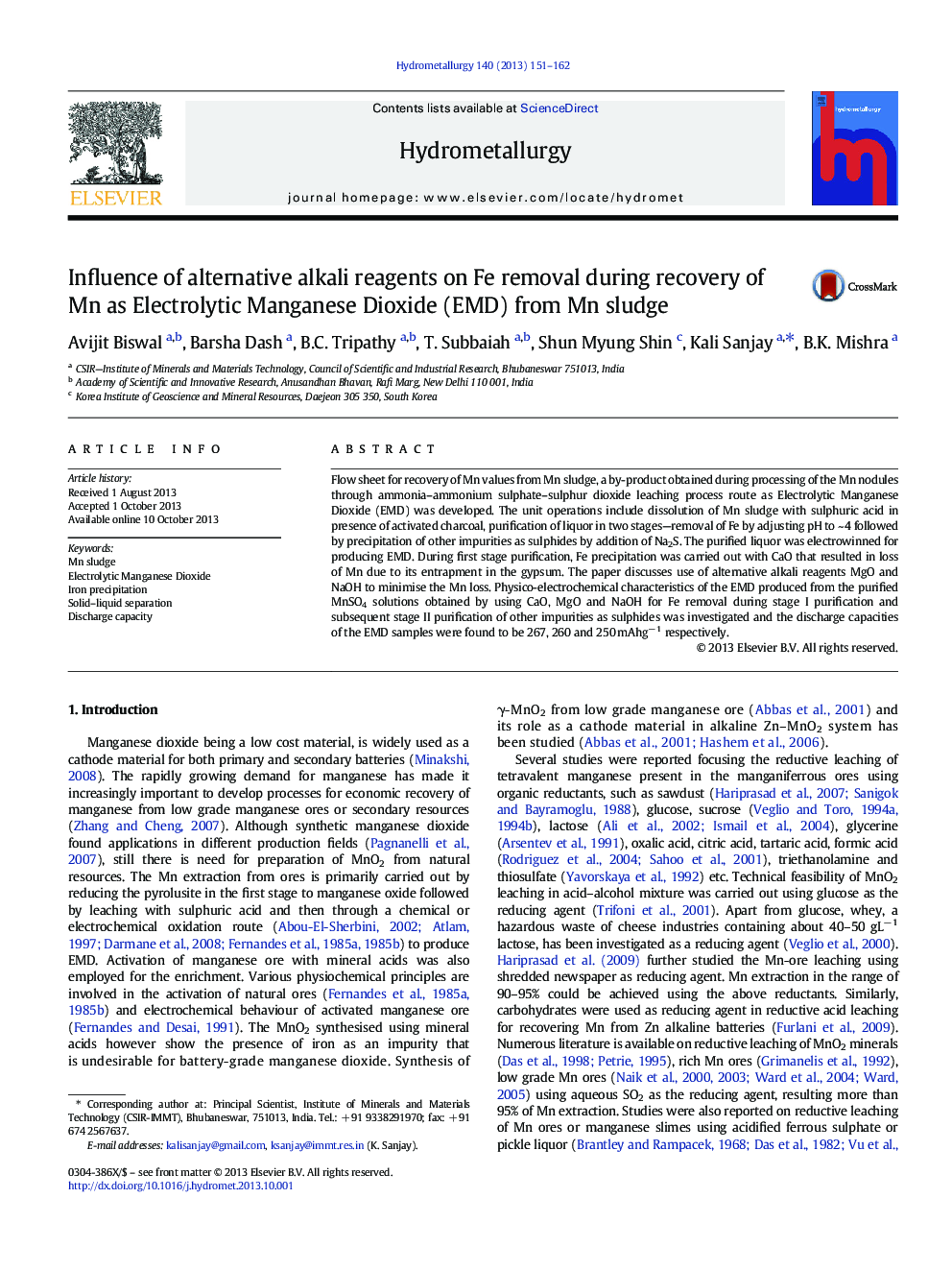| Article ID | Journal | Published Year | Pages | File Type |
|---|---|---|---|---|
| 212311 | Hydrometallurgy | 2013 | 12 Pages |
•MgO was effective in Fe removal with minimal Mn loss compared to CaO and NaOH.•Characteristics of solids during Fe removal with alternative alkali regents studied•EMDMgO showed good cyclic behaviour due to low particle size and high surface area.•Structural analysis of EMDs was carried out using Brenet's and Ruetschi's models.•Complete flow sheet was developed with material balance.
Flow sheet for recovery of Mn values from Mn sludge, a by-product obtained during processing of the Mn nodules through ammonia–ammonium sulphate–sulphur dioxide leaching process route as Electrolytic Manganese Dioxide (EMD) was developed. The unit operations include dissolution of Mn sludge with sulphuric acid in presence of activated charcoal, purification of liquor in two stages—removal of Fe by adjusting pH to ~ 4 followed by precipitation of other impurities as sulphides by addition of Na2S. The purified liquor was electrowinned for producing EMD. During first stage purification, Fe precipitation was carried out with CaO that resulted in loss of Mn due to its entrapment in the gypsum. The paper discusses use of alternative alkali reagents MgO and NaOH to minimise the Mn loss. Physico-electrochemical characteristics of the EMD produced from the purified MnSO4 solutions obtained by using CaO, MgO and NaOH for Fe removal during stage I purification and subsequent stage II purification of other impurities as sulphides was investigated and the discharge capacities of the EMD samples were found to be 267, 260 and 250 mAhg− 1 respectively.
